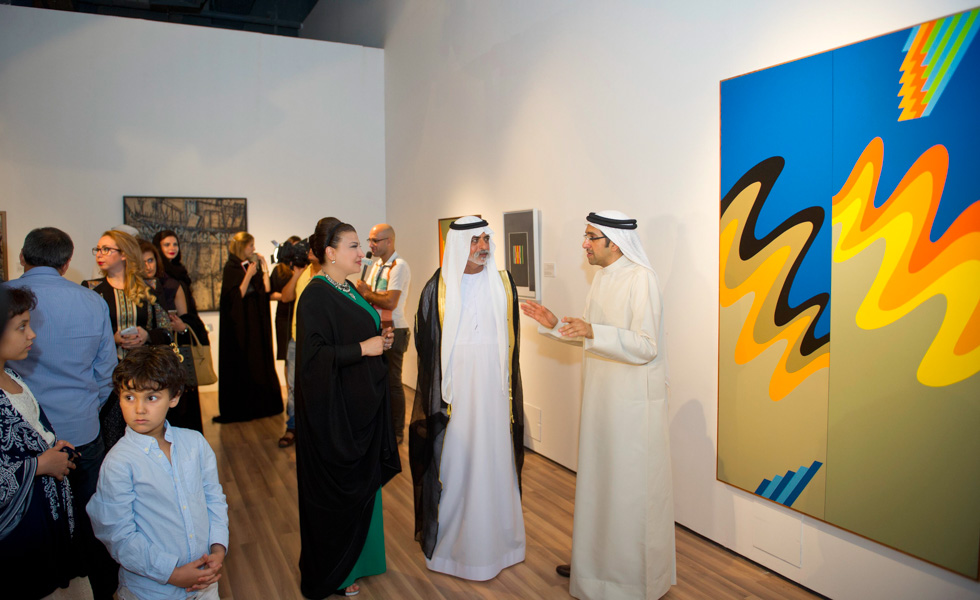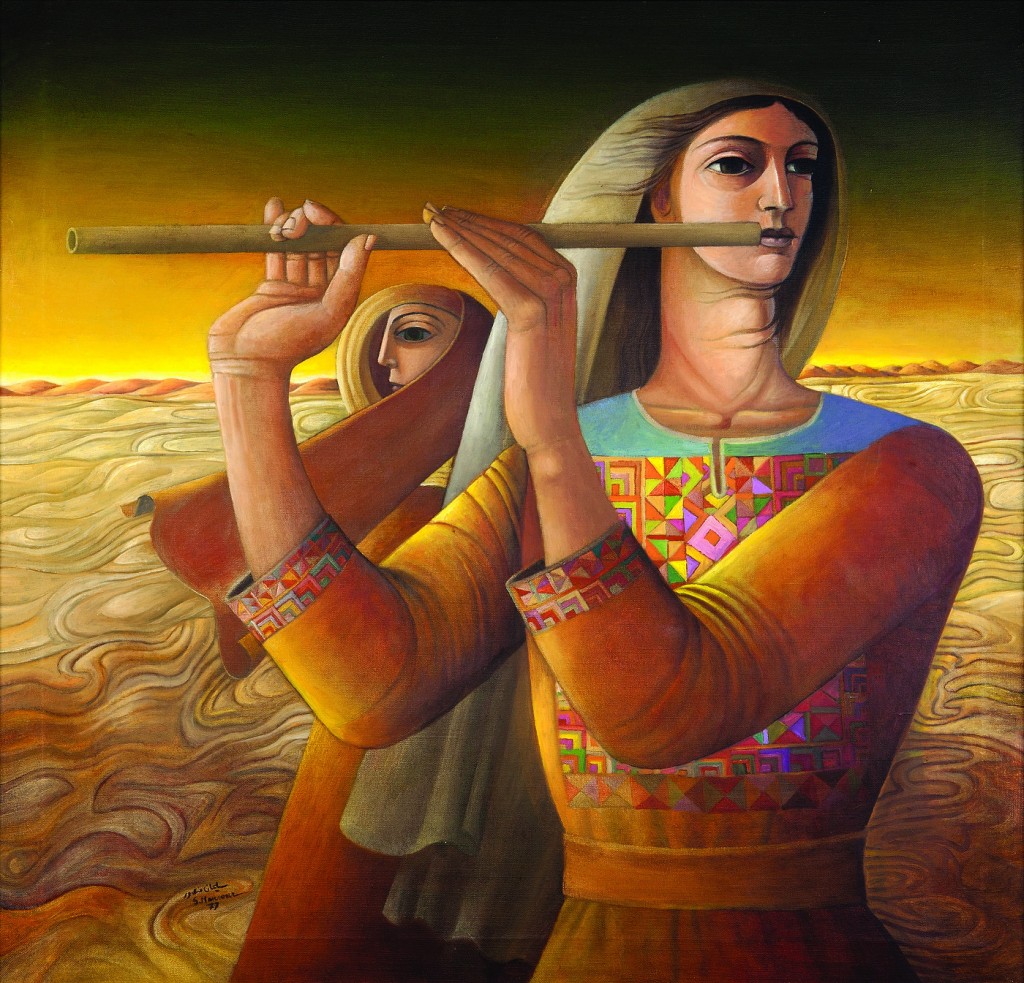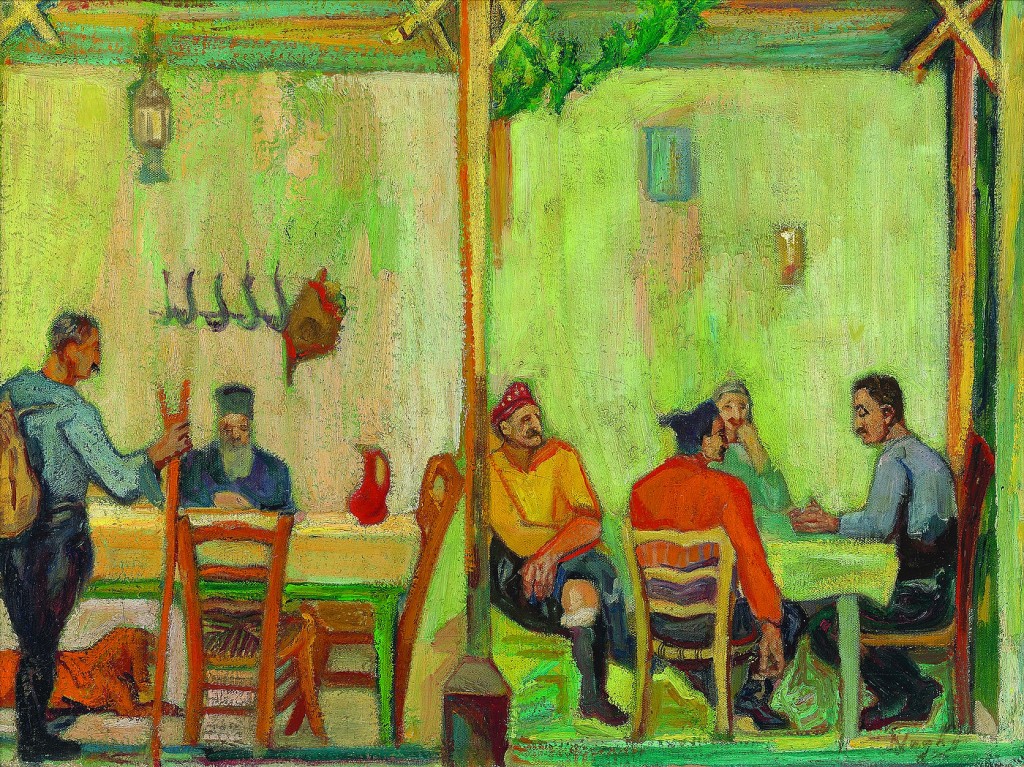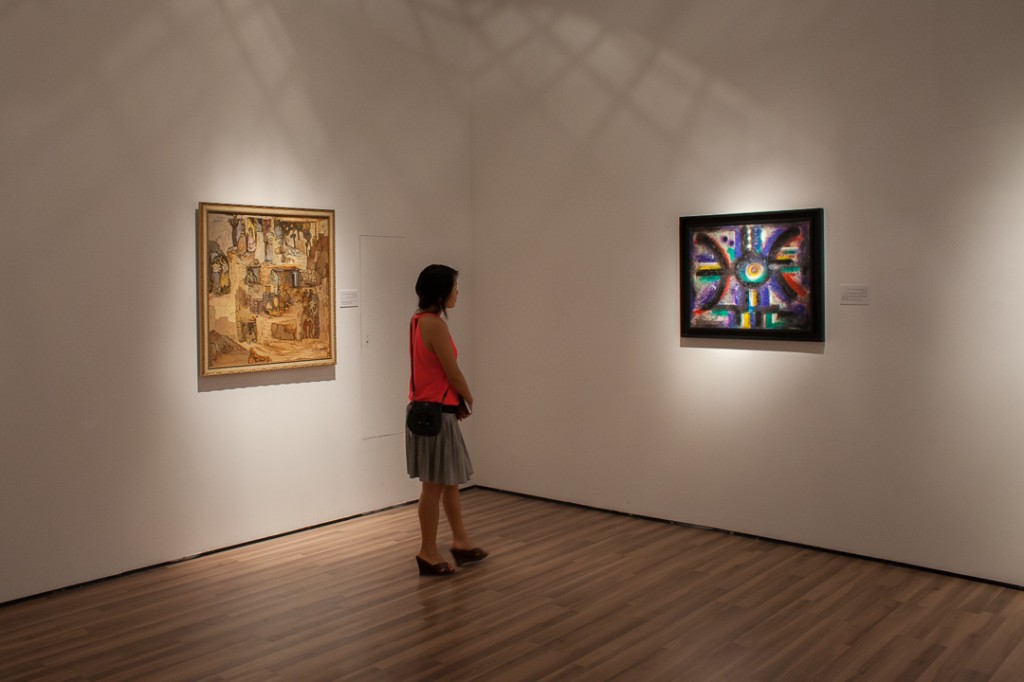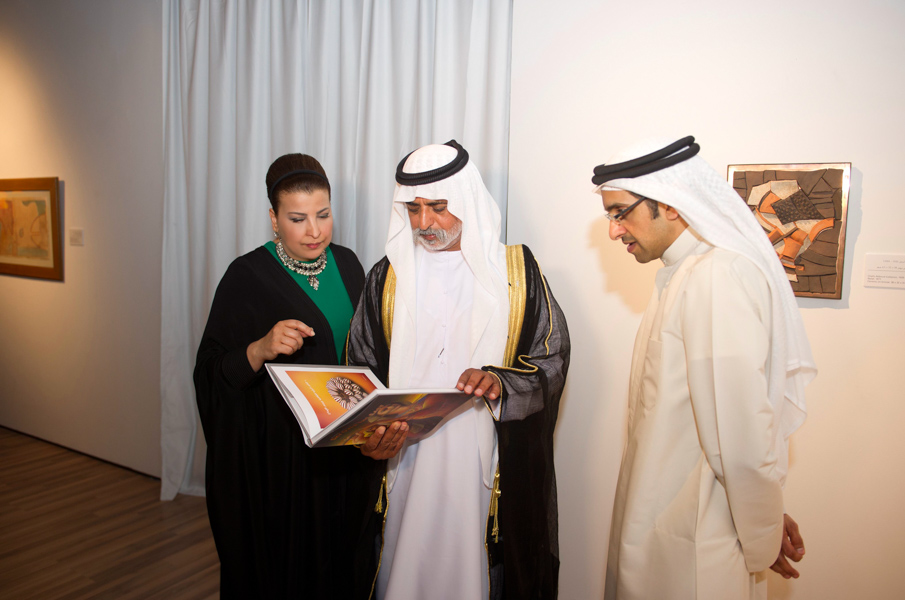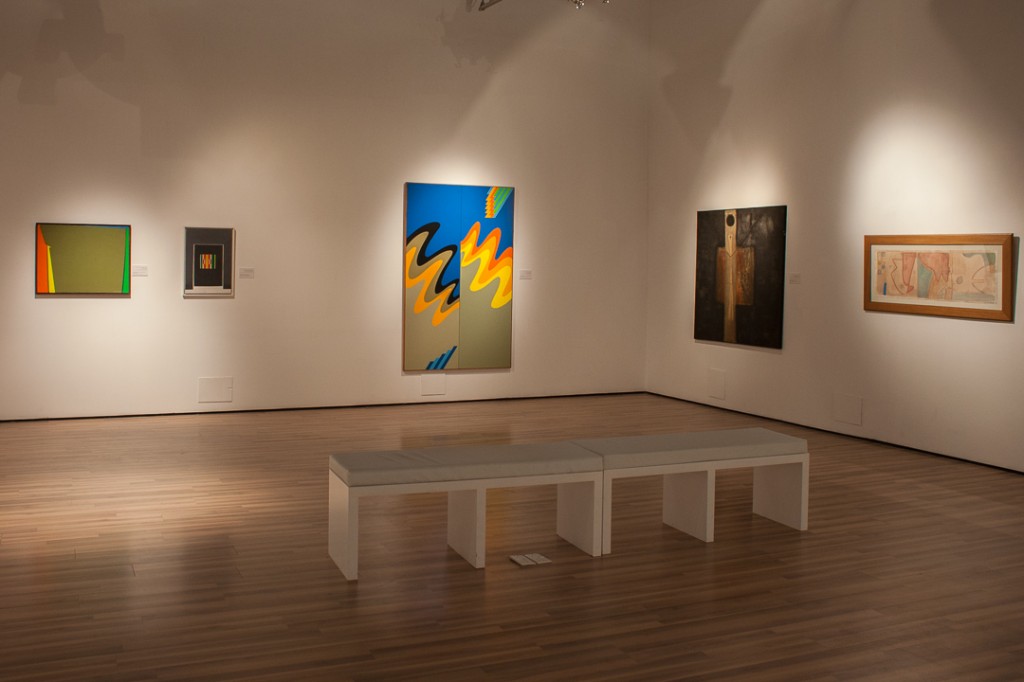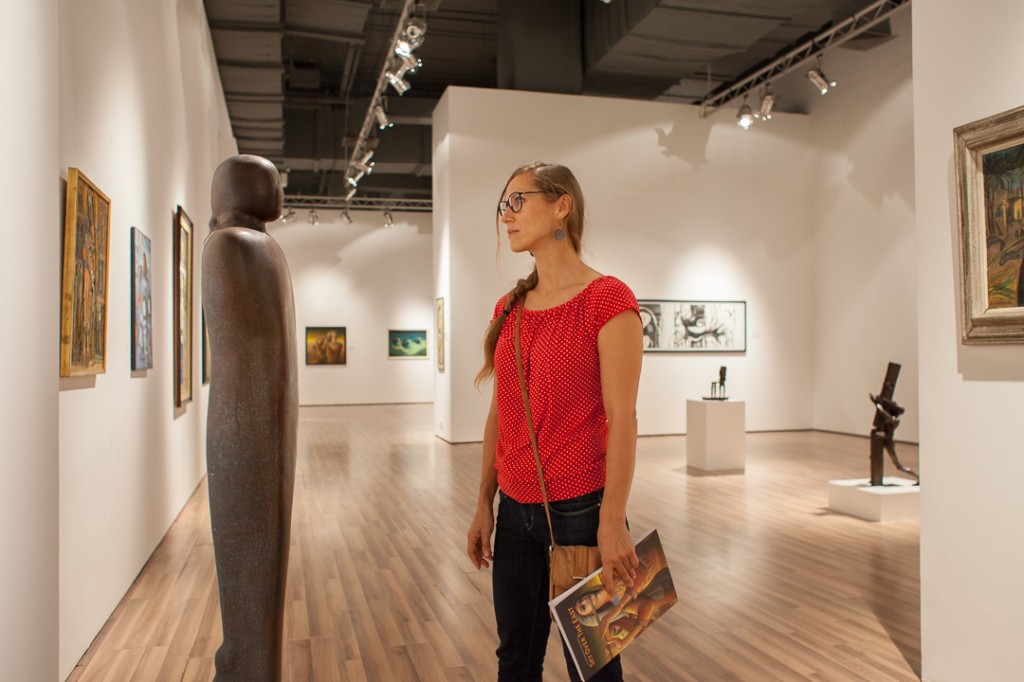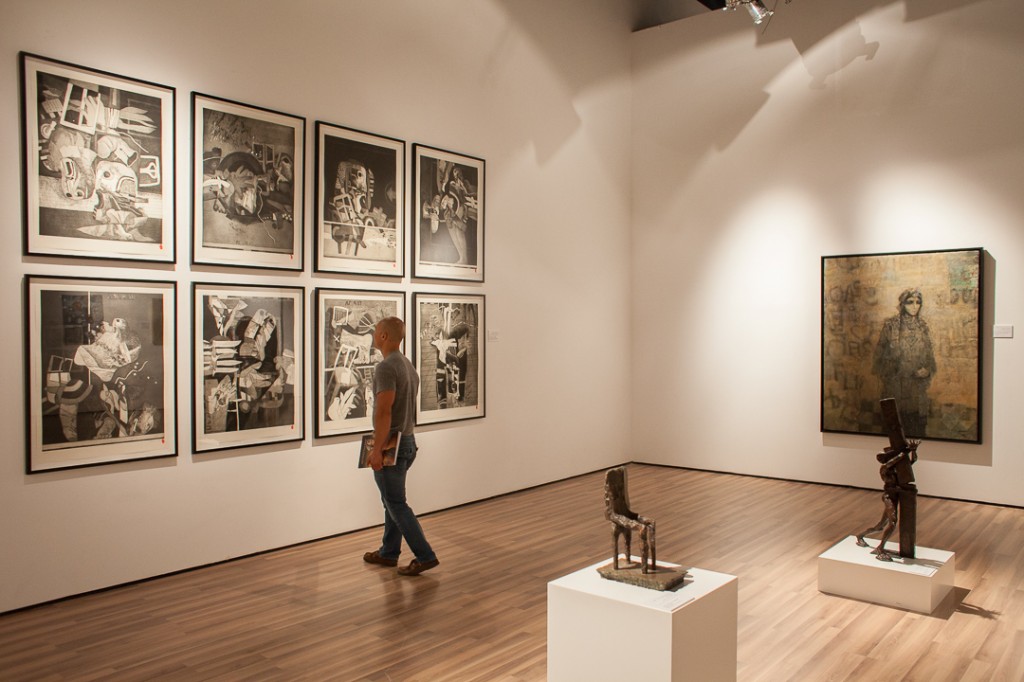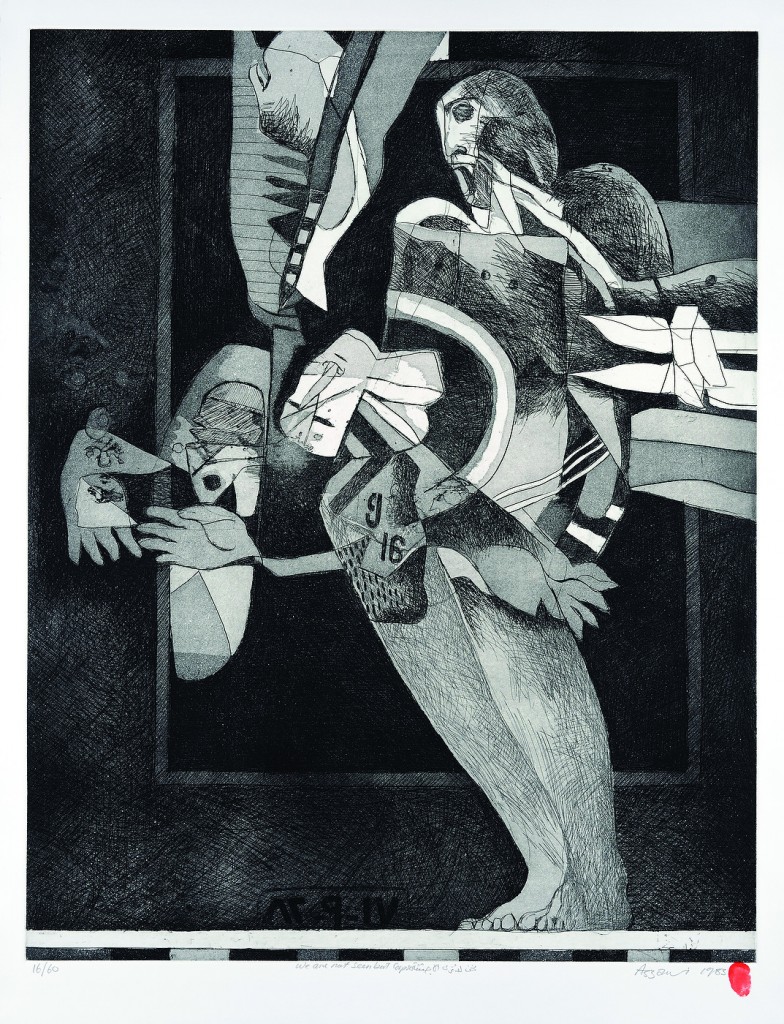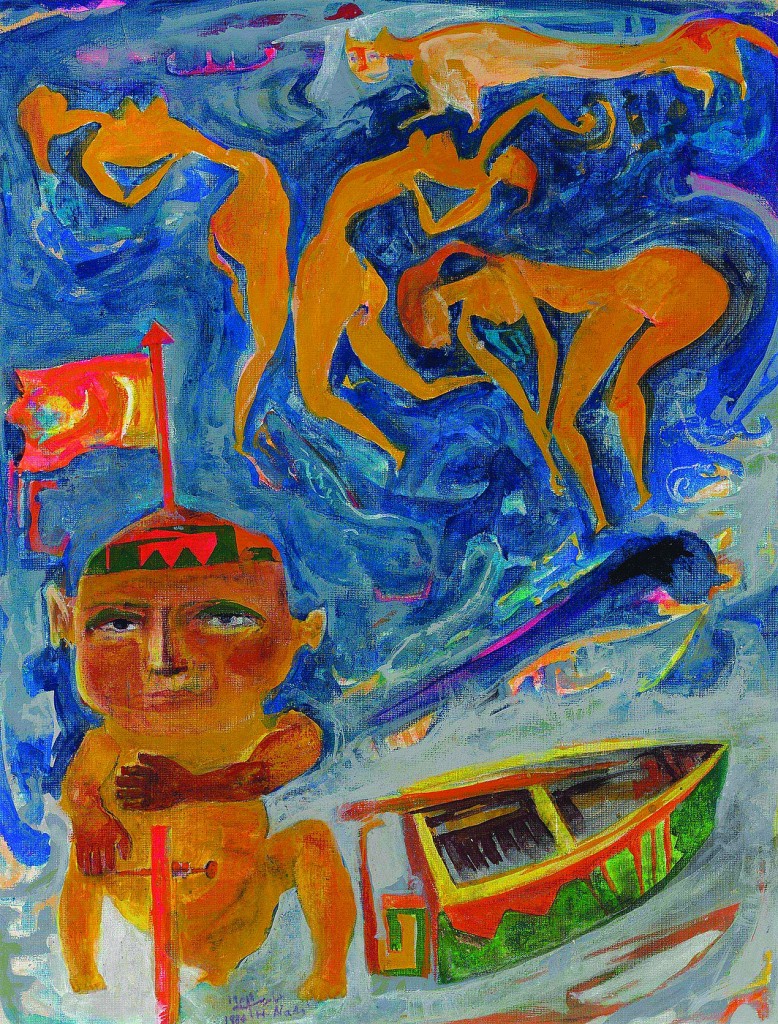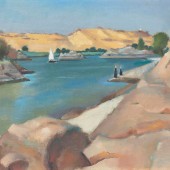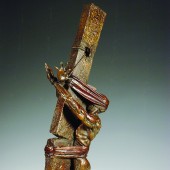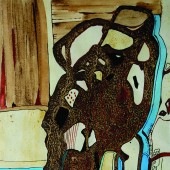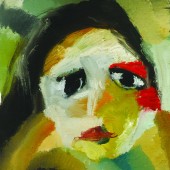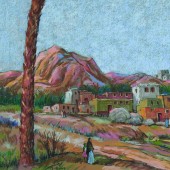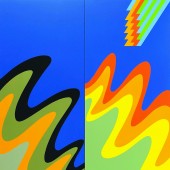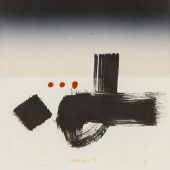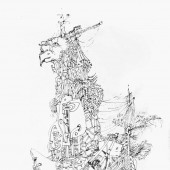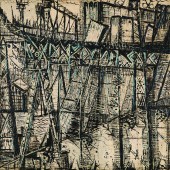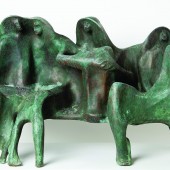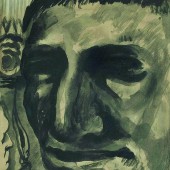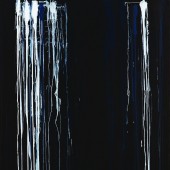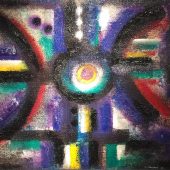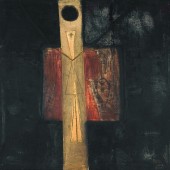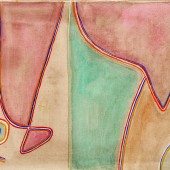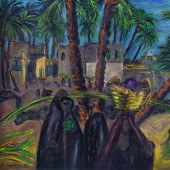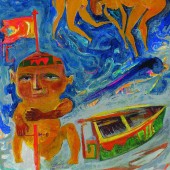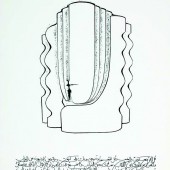Sky Over The East
Composed in 1953, Prayer of the East (Du’aa Al Sharq) made its way into thousands of Arab households in the few years that followed. Put to music and delivered by the renowned Mohammed Abdel Wahab, the lyrics are based on Mahmoud Hassan Ismail’s poem that highlights collective aspects of the Arab spirit and alludes to a shared metaphoric sky under which Arab communities exist. Broadcast via the newly established Sawt Al Arab (a radio channel set up in Egypt in the early 1950s under President Gamal Abdel Nasser) the song quickly gained popularity with the Arab audience and became akin to a universal Arab hymn of the latter part of the 20th century.
Since the 1970s, linguistic derivatives of the words ‘East’ and ‘Orient’ in relation to descriptions of land populated by Arab nations have been questioned and critiqued as terms linked to 20th-century colonialism. The title of this exhibition by no means attempts to serve as a geographical indicator defining physical territories inhabited by Arab societies. Rather, it aims to reference an instance in modern Arab history, when a cultural product served to unify distinct communities and entire nations under a single umbrella of shared identity.
Modes within which Modern Arab artists worked extended from naturalistic documentation of people and landscapes, to creating socio-political commentaries, exploring theological matters, and addressing intimate, personal narratives and concerns. In line with the song’s call to preserve collective memories, 20th-century Arab artists reflected on and re-examined their histories within the context of global developments. They tackled notions of Arab identity, while being influenced by the evolution of European Modernism and work of masters like Henri Matisse, Willem de Kooning and Antoni Tàpies among others. With no single thematic or stylistic thread running through this exhibition, there exist multiple links and relationships between individual works of art, which despite being separated by geography and time, often address similar questions, take on similar approaches and display a shared ethos.
The National – Barjeel Art Foundation shows at Emirates Palace
